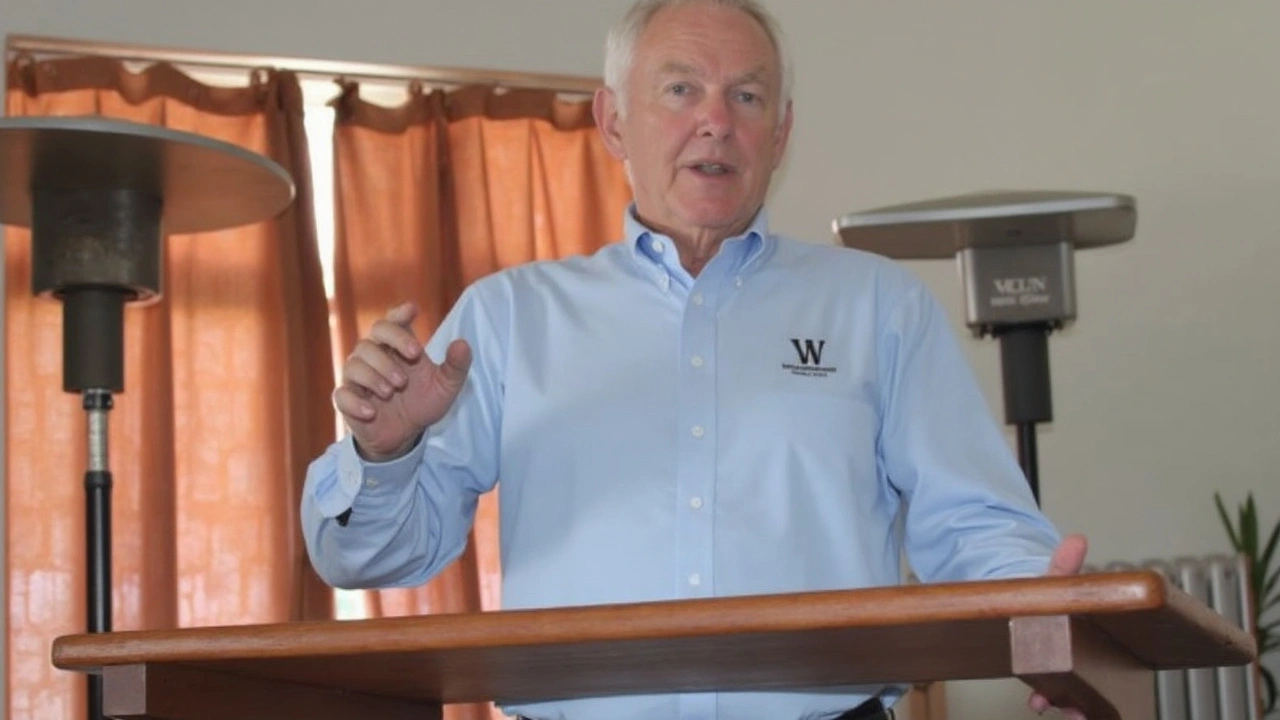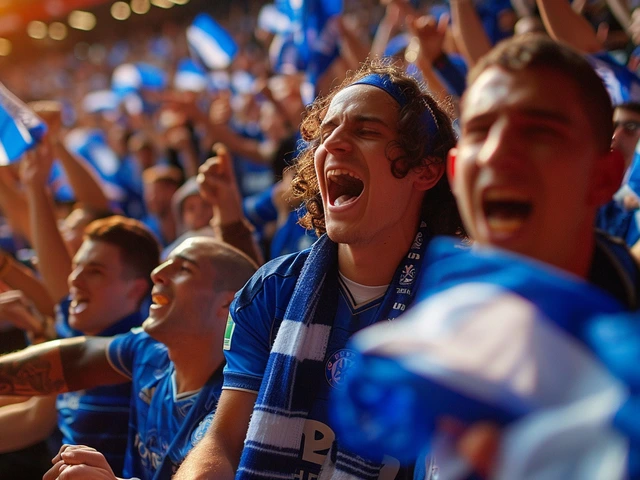How Village Roots Shaped South Africa's Cricket Scene

Colonial Beginnings of Cricket in South Africa
The history of cricket in South Africa begins with its introduction by British settlers, planting the seeds of this sport within the framework of their colonial ambitions. At the heart of this development was the Newlands Cricket Ground in Cape Town, a fertile ground for infusing English traditions into South Africa's social fabric during the mid-1880s.
Newlands wasn’t just a sports venue; it stood as a monument of colonial power and cultural imposition. This ground quickly became a hub for international matches, beginning with the notable first Test against England in 1889. However, while fostering cricket, it also perpetuated racial divides, reflecting the British colony's broader socially segregated structure.
Cricket’s Parallel World in Non-White Communities
Despite being sidelined in the mainstream cricket narrative, non-white communities in South Africa showcased incredible resilience. They established their own cricket unions to keep the sport alive in their locales. The Western Province Coloured Cricket Union (WPCCU) was one such pivotal institution, which offered not only a platform for sporting talent but also a community-built refuge against the exclusionary practices at the core of South African society.
These local leagues were vibrant, showing the passion and determination of non-white cricket enthusiasts to engage with the game they loved, even under oppressive circumstances. Their story is not just one of resistance but also of cultural identity, preserved and expressed through their love of cricket.
A key figure emerging from this complex socio-sporting landscape is Isaac, a long-standing groundsman at Newlands. His life and work exemplify the bridge between the marginalized communities and the South Africa cricket elite. While the segregated practice fields at Newlands bore testimony to the institutionalized racial divides, individuals like Isaac underscored the resilience and dedication of those who worked on the peripheries yet were instrumental to the sport's legacy in the country.






Jared Greenwood
February 22, 2025 AT 16:50The imperial blueprint of cricket in South Africa was a strategic export of British hegemony, cementing cultural dominance through sport. By planting Newlands as a flagship venue, the empire leveraged cricket as a soft‑power lever to infiltrate colonial society. This wasn't just a game; it was a conduit for metropolitan values, a deliberate instrument of control.
Sally Sparrow
February 25, 2025 AT 00:23The narrative glorifies a white‑centric legacy while conveniently glossing over the systematic exclusion of Black and Coloured players. This selective memory serves the nostalgic agenda of elitist historians, reinforcing a myth of purity around the sport's origins. The omission is as telling as the overt references to Newlands' grandeur.
Eric Yee
February 27, 2025 AT 07:57Village grounds were the real cradle of South African cricket, where kids learned the basics on dusty pitches and improvised equipment. Those humble fields nurtured an authentic love for the game that the colonial clubs could never replicate. They kept the spirit alive despite the segregationist policies that tried to marginalize them.
Sohila Sandher
March 1, 2025 AT 15:30Totally agree you’re spot on – those local leagues were the heart‑beat of the sport! Keep shinin’ love on the unsung heroes, they deserved all the applause. Go teams!
Anthony Morgano
March 3, 2025 AT 23:03Loved the deep dive into the village roots 😃! It’s amazing how those gritty community matches built the foundation for today’s stars. The passion you described really shines through!
Holly B.
March 6, 2025 AT 06:37Appreciate the balanced view. It highlights both the colonial impact and the grassroots resilience in a concise manner.
Lauren Markovic
March 8, 2025 AT 14:10Fun fact: The Western Province Coloured Cricket Union actually organized over 40 matches per season in the 1950s, a testament to its organizational capacity 😊. Their records show a steady rise in player participation despite limited resources.
Kathryn Susan Jenifer
March 10, 2025 AT 21:43Oh, because nothing says “cultural preservation” like a sport imposed by colonizers, right? The drama of a white‑washed legacy is just sooo riveting, we’re all on the edge of our seats.
Jordan Bowens
March 13, 2025 AT 05:17Interesting perspective.
Kimberly Hickam
March 15, 2025 AT 12:50When one examines the ontological underpinnings of sport within a colonized milieu, cricket emerges not merely as a pastime but as a complex signifier of power dynamics. The colonial architects deliberately embedded their own epistemological frameworks into the very rules of the game, thereby encoding superiority into its structure. Conversely, the subaltern communities appropriated this imported artifact, reshaping it to reflect indigenous values and collective identity. This process of cultural reappropriation is evident in the way village festivals incorporated cricket matches as communal rites of passage. The data from provincial archives reveal a steady increase in participation among non‑white players from the early 1900s onward, despite institutionalized barriers. Such empirical evidence challenges the monolithic narrative that relegates these communities to the peripheries of sporting history. Moreover, the figure of Isaac the groundsman epitomizes the liminal role of laborers who navigate between the elite and the marginalized. His daily stewardship of the pitch ensured that both privileged and disenfranchised athletes could perform, albeit under starkly different conditions. The spatial segregation of practice fields at Newlands symbolizes the broader societal fissures that persisted throughout apartheid. Yet, the resilience of the grassroots clubs, which often operated with scant funding and improvised equipment, underscores a remarkable agency. One could argue that this agency constitutes a form of quiet resistance, a subtle undermining of the hegemonic order. From a philosophical perspective, the coexistence of oppression and self‑determination within the same sporting arena invites a dialectical analysis. It forces us to reckon with the paradox that a game imported by colonizers became a vessel for anti‑colonial sentiment. In this light, the village roots of South African cricket are not ancillary footnotes but central chapters in the nation's sociocultural evolution. Future scholarship would do well to prioritize oral histories from these community players, thereby enriching the archival record. Only by integrating these multiplicity of voices can we approach a holistic understanding of cricket's true heritage in South Africa.
Gift OLUWASANMI
March 17, 2025 AT 20:23Your pseudo‑philosophical ramblings are nothing more than verbose self‑indulgence, obscuring the concrete realities of exploitation.
Keith Craft
March 20, 2025 AT 03:57In the grand theatre of South African cricket, the shadows of colonial grandeur still dance upon the pristine lawns of Newlands, whispering tales of bygone privilege. Yet beneath that polished veneer lie the murmurs of village pitches where true talent was forged in dust and determination. Those humble fields kept the game's soul alive, even as the elite tried to claim ownership.
Kara Withers
March 22, 2025 AT 11:30That's a beautiful way to put it. Community grounds really are the backbone of the sport, providing a space where passion overrides politics.
boy george
March 24, 2025 AT 19:03Cricket's history is layered; the village roots matter.
Cheryl Dixon
March 27, 2025 AT 02:37While the village narrative is compelling, it's easy to romanticize the past and ignore the ongoing inequities that persist in the sport's administration.
Ramesh Modi
March 29, 2025 AT 10:10Ah, the paradox of nostalgia!; one must ask, does celebrating the grassroots erase the systemic challenges that remain? Indeed, the very act of elevation can become a veil, a silencing of the struggle! Yet, perhaps through such reflective scrutiny we may uncover a path forward-one that honors both heritage and justice!!!